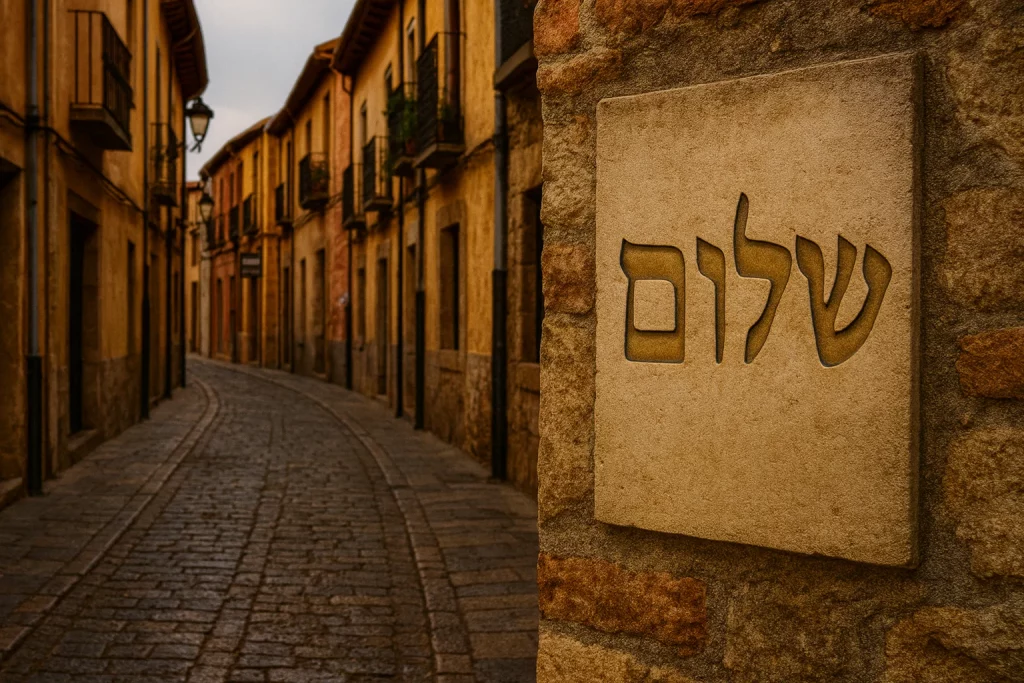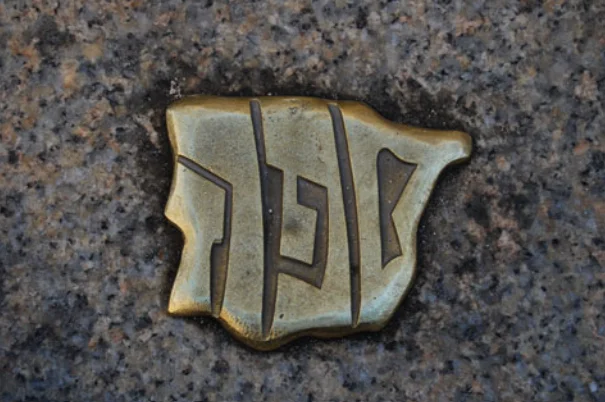The city of León hides a fascinating past that many visitors overlook: its former Jewish Quarter. For centuries, the Jewish community left a deep cultural, economic, and social imprint that can still be felt—if you know where to look.
Thanks to its strategic location on the Way of St James and its political relevance in the Middle Ages, León became a land of opportunity where Jewish communities settled and prospered. The city’s municipal charter granted similar rights to Christians and Jews, fostering coexistence, trade, and cultural exchange.
Discovering this history today is not only an exercise in memory; it adds a special layer to any visit to León, connecting travellers with a past that still resonates in its streets.

Origins in Puente Castro: the Castrum Iudeorum
León’s first great aljama (Jewish community) settled in Puente Castro, across the River Torío. This enclave, known as the Castrum Iudeorum, was among the most important in the kingdom and specialised in crafts such as goldsmithing, leather tanning, and trade. Its strategic position, very close to the Camino de Santiago, encouraged exchange with pilgrims and merchants passing through the city.
The neighbourhood was protected by its own walls and had an internal organisation with rabbis, schools, synagogues, and workshops. Period documents show that the Jewish community played an active role in regional commerce, especially supplying hides and textiles to other parts of the kingdom. We also know there were economic agreements with nearby monasteries, proof of close inter-community ties.
In 1196, a military conflict between the kingdoms of León and Castile-Aragon led to the destruction of the Jewish quarter in Puente Castro. Chronicles describe homes set ablaze and the main synagogue razed. Survivors were forced to cross the river and seek refuge within the city walls, marking the start of a new chapter in their history.
The intramural Jewish Quarter: life in the medieval city
Once inside the historic centre, the Jewish community settled around today’s Plaza de San Martín and Calle Santa Ana. These streets—now full of bars and shops—were the hub of Jewish life for centuries, home to synagogues, craft workshops, and shops open to all neighbours.
The Jewish Quarter’s streets bustled with merchants selling spices, fabrics, and metal goods. Many Jews also worked in medicine, accountancy, and teaching—highly respected professions that brought prestige within the city. The main synagogue became not only a place of worship but also a cultural meeting point where community matters were discussed and knowledge was passed on.
Coexistence—though not always free of tension—helped León avoid the large-scale massacres of the 14th century that hit other cities. Nevertheless, disturbances were recorded in 1449, and in 1481 the community was ordered to live within restricted areas. The 1492 expulsion decrees brought the official end of the community, although some conversos remained and secretly preserved parts of their traditions.

Places that keep the memory alive
- Calle Prado de los Judíos: recalls the site of the old Jewish cemetery.
- Calles Cercas and Santa Cruz: still show fragments of the medieval wall.
- Museo de León: holds pieces such as the Stele of Mar Selomó (1097), one of the oldest Jewish funerary inscriptions in Spain. More information: https://redjuderias.org/leon-2/
- León Cathedral: the ambulatory preserves 15th-century paintings with Jewish figures, a visual record of their presence.
- Puente Castro Monolith: unveiled in 1997 in memory of the Jewish community that lived there.
Walking these sites is like following an invisible map that binds past and present. Every street, name, and stone tells a story that invites us to reflect on coexistence and cultural exchange in the Middle Ages. Spain’s Network of Jewish Quarters has helped signpost and highlight these spaces so visitors can better understand their meaning.
At the Museo de León, alongside the Stele of Mar Selomó, you can see other fragments of Hebrew headstones and objects recovered from archaeological digs in Puente Castro. These remains are tangible evidence that allows us to imagine daily life within León’s Jewish community.
A must for history lovers
Strolling through León’s Jewish Quarter is a journey back in time. Narrow lanes, traces of the wall, and evocative place names invite you to picture life here more than 500 years ago. Several local companies offer guided tours that reveal these corners with historical context and curiosities:
- Guided tour “León Judío”: https://redjuderias.org
- Free Tour “León Histórico”: https://freetour.com/leon
These visits often combine Jewish history with other parts of the old town—such as Plaza del Grano or Plaza Mayor—offering travellers a rounded view of the medieval city. Many guides include anecdotes and legends, turning the experience into much more than a simple history lesson.
If you enjoy cultural travel, this route is the perfect complement to other León gems like San Isidoro, the Palacio de los Guzmanes, or the Cathedral itself. The contrast between the solemnity of the great monuments and the intimacy of the Jewish streets makes for a very special experience.
📍 Traveller tip: Combine this route with an afternoon of tapas in the Barrio Húmedo—very close to where the Jewish Quarter stood—and end your day enjoying the Cathedral’s night lighting. Wear comfortable shoes: many streets preserve their original cobblestones.
🛏 Your perfect base in León
If you want to discover the Jewish Quarter and León’s heritage, our holiday apartments León Apartamentos are your ideal stay. Right in the centre, they offer comfort, unique views, and instant access to all points of interest—perfect for enjoying León on foot and living an authentic experience.
📌 Book now: https://leonapartamentos.com

